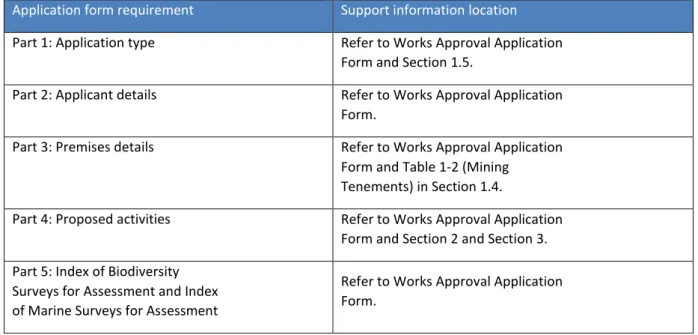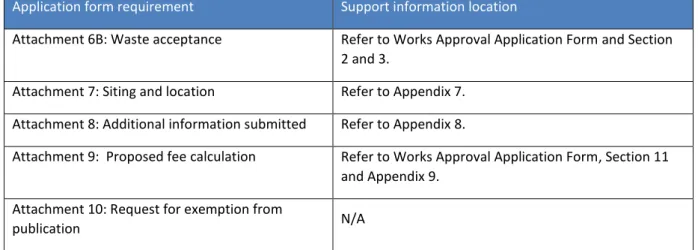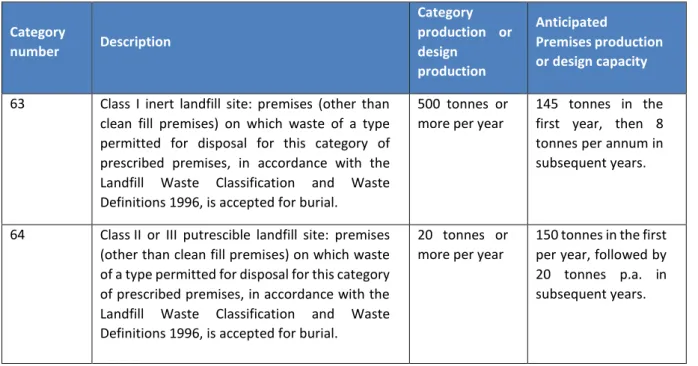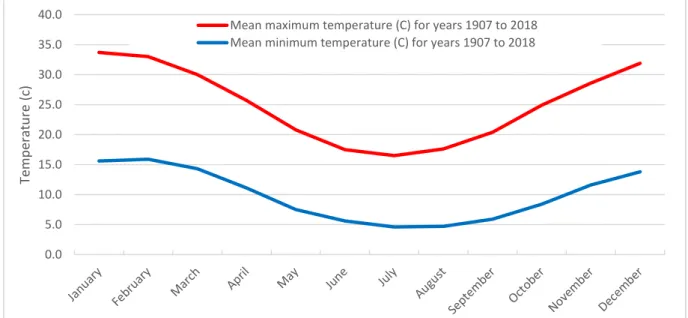This report is confidential and is intended solely for the purpose of informing and advising Covalent Lithium Pty Ltd and its related legal entities under the Corporations Act 2001. Any material which may constitute legal advice is intended solely for the purposes of Western Australia Lithium's trust and use and its related legal entities and may be subject to the professional secrecy of an attorney, which is not waived by the inclusion of such advice in this report. DJSTI Department of Jobs, Tourism, Science and Innovation DMIRS Department of Mining, Industry, Regulation and Safety DMP Department of Mining and Petroleum.
Proponent
The Inert Premises will be operational primarily during the construction phase of the Earl Gray Lithium Project and will be fully covered by RoM material after 3 years.
Purpose of this Document
Document Index
Premise Tenure
Prescribed Premise Activities
Inert Premise and Putrescible Premise Location
Timing
Design, Construction and Operation
No fuel or hazardous material shall be stored or disposed of at the Inert Premises. The Inert Premise will only be in operation during daytime hours, from 07:00 to 17:00, 7 days a week. The Inert Premises will be located on the west side of the area reserved for the RoM.
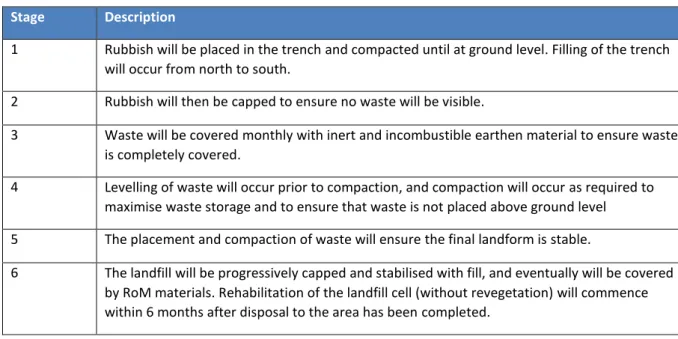
Timing
Design, Construction and Operation
Once operational, the Putrescible facility will be managed in accordance with the requirements in Table 3-2. No fuel or hazardous materials will be stored or disposed of on the Putrescible premises. The Putrescible space will operate primarily during the construction and start-up phase of the Earl Gray Lithium project.
Environmental Protection Act 1986
Works Approval, Licences and Registrations)
Climate
Remnant tropical cyclones and associated depressions can occasionally bring heavy rains to the region; however, they are erratic in nature and occur infrequently. On this basis, Lake Carmody (Station no. 010670) was used for rainfall data considering long-range rainfall data recorded since 1907 and Hyden (Station no. 009617) for temperature data and the wind
Temperature
Topography
Geology
Topsoil (A Horizon) was noted to be present throughout the Earl Gray Lithium Project area in both soil types described above at approximately 200mm depth and suitable for remediation purposes. Both the passable and the inert facility are located within Land Group 302 which is considered to have a low erosion risk and suitable for rehabilitation. No contaminated site is in the vicinity of the Putrescible and/or Inert facility and.
Hydrology
Wollubar Sandstone Provides one of the largest sources of groundwater for mineral processing in the Eastern Goldfields Region. Alluvial deposits Can form smaller aquifers in the region where they extend below the water table. The highest saline groundwater was recorded in the northeastern part of the proposed pit (KEGR098).
Flora and Vegetation
There are few surface water features within the Earl Gray Lithium Project DE due to the previous mining activities (between 1988 and 2001), which saw the construction of numerous earthworks which formed effective drainage diversions around most of the Earl Gray Lithium Project site . The majority of the taxa recorded were representative of the Myrtaceae (46 taxa), Fabaceae (30 taxa), and Proteaceae (19 taxa) families. No declared weeds listed under the Biosecurity and Agricultural Management Act 2007 (BAM Act) according to the current listings by the (DPIRD 2019) have been recorded.
Fauna
One frog, 32 reptiles, 77 birds, 18 native mammals and five introduced mammals were recorded within the Earl Gray Lithium DE Project. Stygofauna have not been recorded in the survey area (10,000 square kilometers (km2) surrounding the Earl Gray DE Lithium Project), reflecting a combination of several surveys and the generally poor outlook of the hydrogeological landscape in the vicinity of the Earl Gray DE Lithium Project. Based on the geology, troglofauna are unlikely to occur at the Earl Gray Lithium DE Project.
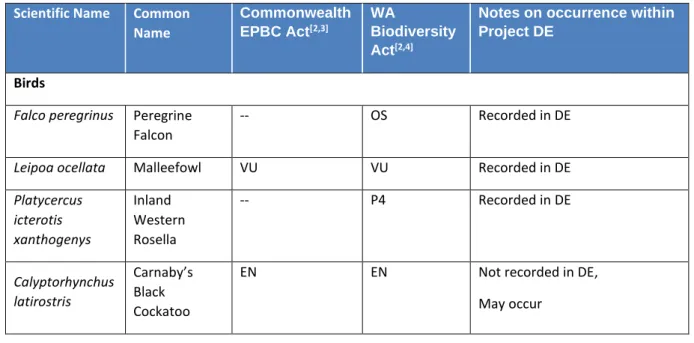
Air quality, Noise and Odour
In general, the construction of the Inert Premises and the Putrescible Premise is not considered to pose a significant threat to subterranean fauna; and so no specific subterranean fauna management is proposed. Twenty-three of the species belonging to SRE groups appear to be widespread, six are unlikely (but potential) SRE species and 19 are potential SREs. The relatively high proportion of potential SRE species is partly a reflection of data limitations, including the small number of records for each species and limited information on the habitats occupied by the species.
Social Environment
The size of the area covered by the Inert Premise (1.01 ha) and the Putrescible Premise (1.96 ha) is negligible compared to the likely distributions of SRE species that may be present. A review of the Department of Planning, Lands and Heritage's (DPLH) Aboriginal Heritage Inquiry System (AHIS) in May 2021 revealed that there are no registered Aboriginal heritage sites within or adjacent to the Inert Premise and/or Putrescible Premise. Sensitive receptors near inert premises and putrefactive premises are discussed in Section 5.
Emissions
The management measures presented in Section 7 are expected to minimize the risk of erosion during inert and decaying space construction. Given the management measures in place (see Section 7), the fire hazard is not expected to increase significantly during the operation of the inert room and putrefaction room. The management measures presented in Section 7 are expected to minimize the risks associated with soil during inert and putrefactive space operations.
Emissions to Air
The construction and operation of the property will be carried out in accordance with the Works Approval Instrument issued to Covalent and the Environmental Protection (Rural Landfill) Regulations 2002. Use of water carts when required to wet dust generating surfaces such as roads and earthworks. Use of weather forecasts to predict extreme weather conditions likely to lead to increased dust emissions so that Covalent can minimize the impact by applying additional dust.
Noise Emissions
Use of defined towing routes and reduced vehicle speed limits for mobile equipment traveling on bare surfaces or roads.
Odour Emissions
The operation of the Inert Site is not expected to produce odours, due to the type of inert waste disposed of in this landfill category (see Section 2.3.4). The operation of the Putrescible Premise may produce offensive odors as the putrescible waste breaks down. Given the remote nature of the site (at least 2 km from the nearest receptor), and disturbed state of the surrounding environment, the impact on human health and amenity is expected to be minor.
Light Emissions
Complaints relating to odor will be logged and investigated in accordance with the Covalent Incident Management Procedure.
Emissions to Land and Water
Covalent will ensure that a fire barrier of at least 3m is erected around the boundary between the inert premises and the decomposable premises. This fire path will be maintained for the life of the inert premise and the perishable premise. The operation of both the Inert Premise and the Putrescible Premise has the potential to affect soil (through leachate) if water is allowed to accumulate in trenches/cells in contact with waste.
Disturbance of the soil during the operation and construction of the inert and decaying space can cause soil erosion. Implement stormwater controls in accordance with the GHD Stormwater Modeling Assessment (2021), including appropriate embankment placement at the perimeter of the inert space and decay space to divert surface water flows around the spaces. Noise emissions are not expected to affect the amenity of the surrounding environment for the identified receptors, given the distance (> 2 km) and management controls implemented (Section 7.2.1).
Noise emissions are not expected to affect the amenity value of the environment for identified receptors, given the separation distance (>2 km) and the implemented control measures (Section 6.2.2). Health and quality of life: Odor emissions generated by the operation of the Putrescible Premise are not expected to affect the health and quality of life of the environment for residents of. Waste carried by the wind is not expected to affect the amenity value of the environment for residents of the accommodation village, given the separation distance (> 2 km) and the management measures implemented (section 0).
All waste blown outside the Inert Premise and/or the Putrescible Premise will be returned to the landfill in accordance with the Environmental Protection (National Landfill) Regulations 2002 ordinance at least once a month.
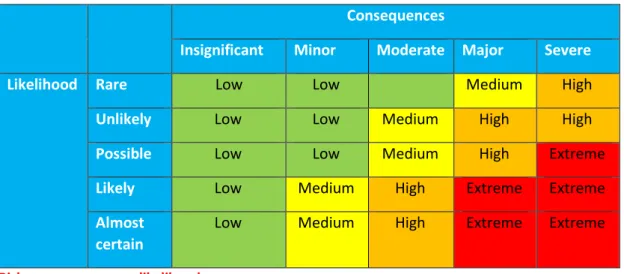
Environmental Policy
Covalent Lithium has committed to developing an Environmental Management System (EMS) to facilitate the management of environmental responsibilities for all phases of the Earl Gray Lithium project (construction, operation and closure). Over the life of the Earl Gray Lithium Project, it will enable EMS Covalent Lithium to systematically assess and review environmental impacts, in addition to implementing environmental impact management programs and liabilities. The Covalent Lithium Earl Gray Lithium Project EMS is expected to apply appropriate standards (AS/NZ ISO Environmental Management System Standard) that are internationally recognized and accepted and include a model for continuous improvement.
Commonwealth and State Agencies, and Covalent Lithium are in the detailed design phase of the Earl Gray Lithium Project, therefore the major components of an EMS have been developed and where directly relevant to the Earl Gray Lithium Project are described below:.
Environmental Planning
Implementation and Operation
Checking
Management Review
Stakeholder Engagement Strategy
Consultations to date have consisted primarily of meetings and correspondence with a number of state and federal departments and agencies, local government agencies, and non-governmental organizations and interest groups. Covalent is committed to ongoing stakeholder identification, communication, involvement and consultation during the planning and approval phase, and throughout the construction, operational and closure phases of the project. Prior to the submission of the Phase 2 Mining Proposal and Mine Closure Plan (MCP) - Ongoing meetings with DMIRS to discuss project approvals and best practices.
Prior to submission of pending/upcoming works approvals - Ongoing meetings with DWER to discuss project approval pathways under relevant legislation and best ways forward. Prior to the issuance of the Ministerial Statement on TSF by EPA - Consultation and updates to relevant stakeholders, including the local community, Aboriginal groups, NGOs and relevant local, state and federal government agencies. Prior to issuance of federal approval by DAWE, including relevant non-governmental organizations and local, state and federal government agencies.
Stakeholder Consultation
Copyright in this document is reserved to the Crown in right of the State of Western Australia. -9 The Proposer shall implement the most recent revision of the Flora and Vegetation Environmental Management Plan, which the CEO has confirmed by written notification, that it meets the requirements of condition 6-4. 7 Terrestrial Fauna Environmental Management Plan. -8 The Proposer shall implement the most recent revision of the Terrestrial Fauna Environmental Management Plan, which the CEO has confirmed by written notification, that it meets the requirements of condition 7-4. 8.
-2 Within twelve (12) months of the publication of this Statement, the Promoter shall prepare and submit a Land Acquisition Strategy for Endangered Wildlife Lands as per the requirements of the CEO. 8-6 The Promoter implements the latest version of the Land Acquisition Strategy for Endangered Wildlife, which the CEO has confirmed in writing as meeting the requirements of Condition 8-3. 8-7 Within twelve (12) months of the publication of this Statement, the proposer shall prepare and submit a Flora Offset Strategy as per the requirements of the CEO.
8-12 The initiator implements the latest version of the Flora Offset Strategy, which has been confirmed in writing by the CEO and meets the requirements of condition 8-8. Copyright in this document is reserved by the Crown in law of the State of Western Australia. Provided an overview of the Covalent project and explained the requirements for building energy infrastructure.

